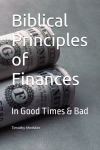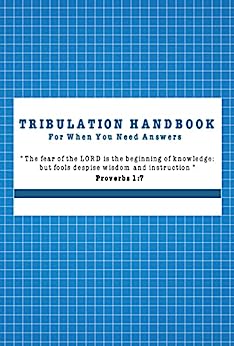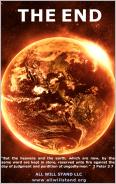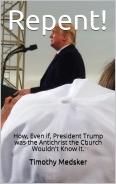Origins of Groundhog Day
by Tim | May 1, 2014 | Holiday |
Origins of Groundhog Day
Bible Study Supplement – US History Study
Groundhog day is certainly not a holiday that many celebrate. Yet every year there is an event that takes place in Punxsutawney, PA. This has been going on since 1886. According to groundhog.org, the official website of the event, “if Punxsutawney Phil sees his shadow, there will be six more weeks of winter weather. If he does not see his shadow, there will be an early spring.” This site admits that the origins of this event are from the Catholic Candlemas. So just what are the origins of Candlemas? This study will take a brief look into the origins of Groundhog Day.
A Historical Look
“From a very early, indeed unknown date in the Christian history, the 2nd of February has been held as the festival of the Purification of the Virgin, and it is still a holiday of the Church of England.”1 The popular name of Candlemas is derived from the ceremony which the Church of Rome dictates to be observed on this day; namely, a blessing of candles by the clergy…”2 “At Rome, the Pope every year officiates at this festival in the beautiful chapel of the Quirinal. When he has blessed the candles, he distributes them with his own hand amongst those in the church…The cardinals go first; then follow the bishops, canons, priors, abbots, priests, down to the sacristans and meanest officers of the church”3
“It appears that in England, in Catholic times, a meaning was attached to the size of the candles and the manner in which they burned during the procession; that, moreover, the reserved parts of the candles were deemed to posses a strong supernatural virture:
‘This done, each man his candle lights,
Where chiefest seemeth he,
Whose taper greatest may be seen;
And fortunate to be,
Whose candles burneth clear and bright:
A wondrous force and might
Doth in these candles lie, which if
At any time they light,
They sure believe that neither storm
Nor tempest doth abide,
Nor thunder in the skies be heard,
Nor any devil’s spide,
Nor fearful sprites that walk by night,
Nor hurts of frost or hail’”4
There is more to be learned regarding this custom and it’s relation to the Roman Catholic Church and the Purification of Mary. However the focus of this brief historical study is focusing on Candlemas’s relationship to Groundhog Day, to where we will once again continue in that direction. “There is a universal superstition throughout Christendom, that good weather on this day indicates a long continuance of winter and a bad crop, and that its being foul is, on the contrary, a good omen. Sir Thomas Browne, in his Vulgar Errors, quotes a Latin distich expressive of this idea; which may be considered as well translated in the popular Scottish rhyme:
‘If Candlemas day be dry and fair,
The half o’ winter’s to come and mair;
If Candlemas be wet and foul,
The half o’winter’s gane at Yule.”5
Germany had a couple of proverbial expressions about Candlemas day. One goes as follows, “The badger peeps out of his hole on Candlemas day, and when he finds snow, walks abroad; but if he sees the sun shining, he draws back into his hole.”6
“These notions, like Candlemas, “are derived from pagan times.” In Martin’s Description of the Western Islands, on Candlemas day “the Hebrideans observe the following curious custom: ‘The mistress and servants of each family take a sheaf of oats and dress it up in women’s apparel, put it in a large basket, and lay a wooden club by it, and this they call Brud’e Bed; and then the mistress and servants cry three times, “Brud is come; Brud is welcome!” This they do just before going to bed, and when they rise in the morning they look among the ashes, expecting to see the impression of Brud’s club there; which, if they do, they reckon it a true presage of a good crop and prosperous year, and the contrary they take as an ill omen.”7
The customer of Groundhog Day was brought to America by Great Britian and Germany. “In Germany it was the badger which broke its hibernation to observe the skies, in the United States the belief was transferred to the woodchuck.”8 So there is a brief history of Groundhog Day. This American take on Groundhog Day apparently has origins that go back to at least Candlemas in Europe and further elsewhere.
References:
-
The Book of Days, Chambers, 1879
-
Ibid.
-
Ibid.
-
Ibid.
-
Ibid.
-
Ibid.
-
Ibid.
-
Unknown







